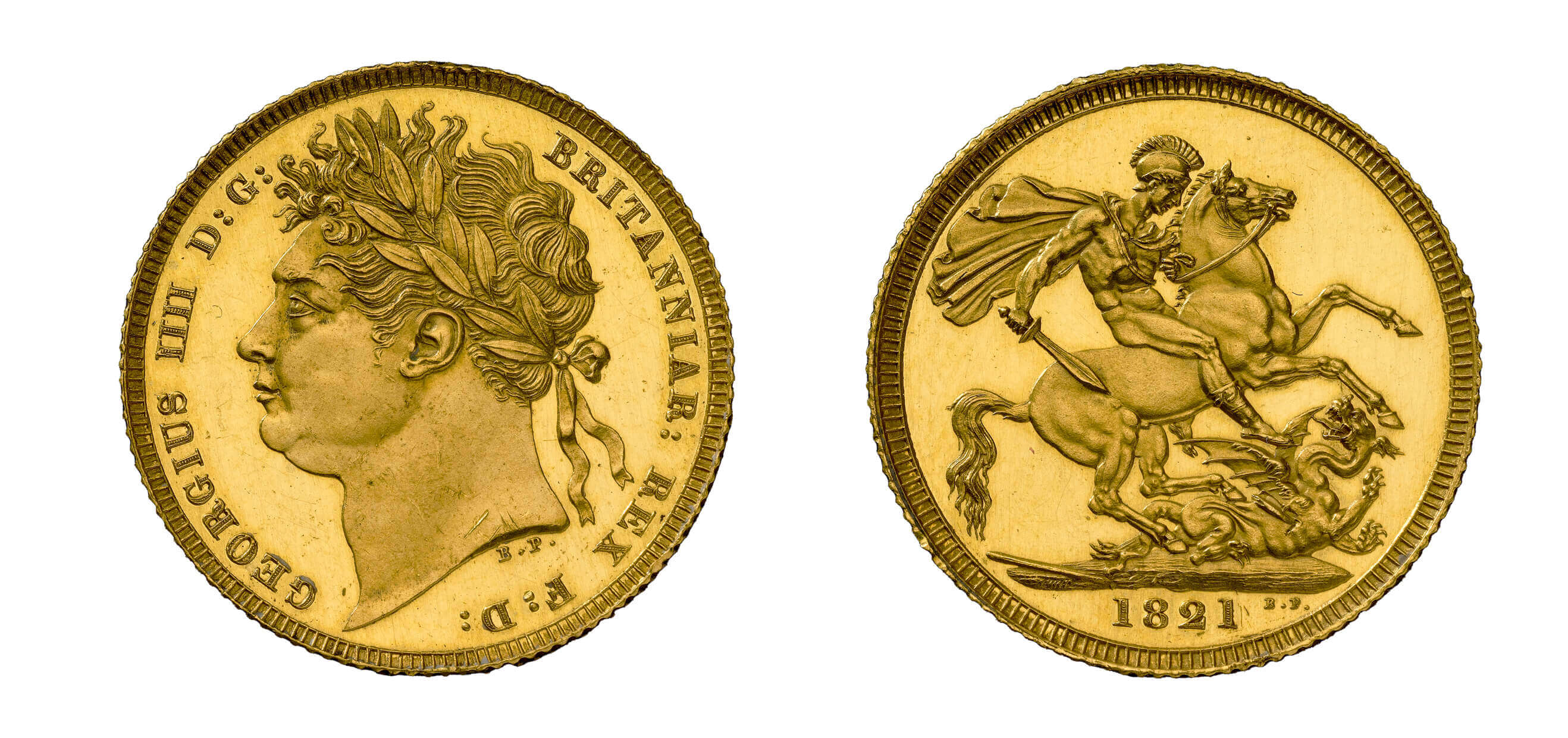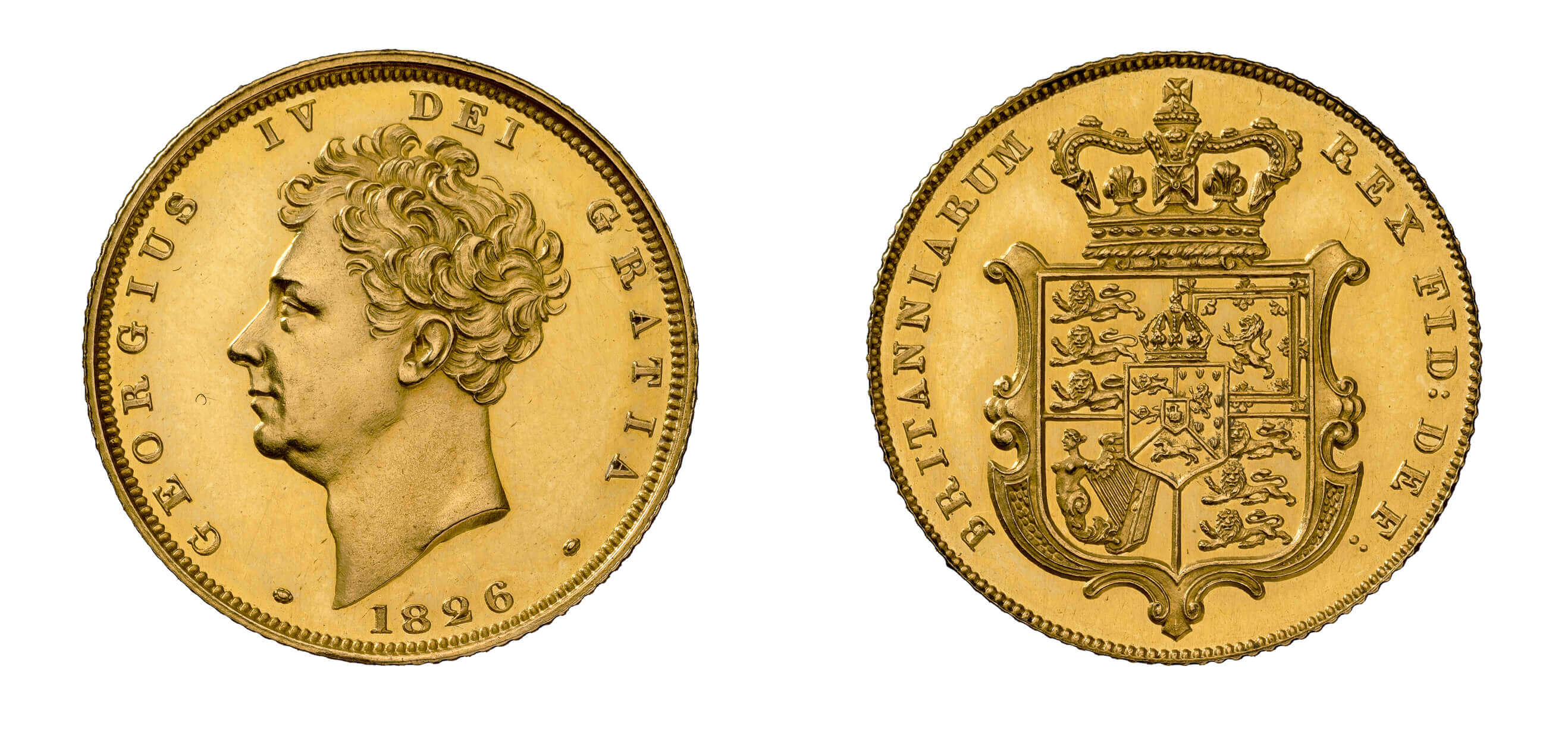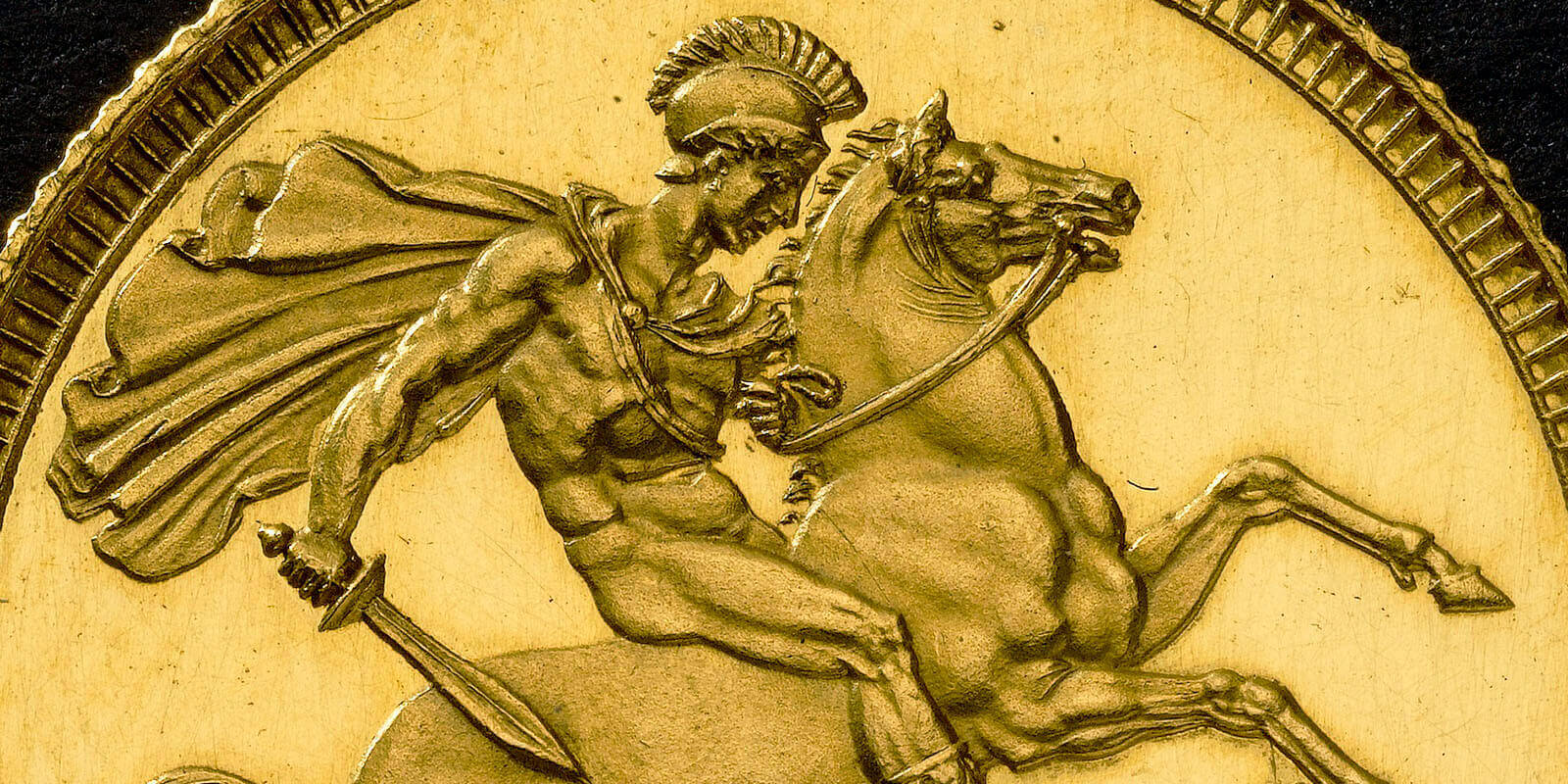Changing Designs

George IV sovereign (RMM1298)
Although the garter belt was removed from the design and some minor modifications were made to the figure of St George, the St George and the dragon design continued to appear on the sovereigns of George IV’s reign. A portrait was prepared by Benedetto Pistrucci which, whilst full of character, was disliked by the new king. When asked to develop a design based on a bust of the monarch by the sculptor Sir Francis Chantrey, Pistrucci refused to copy another artist’s work and the task fell to his fellow engraver, William Wyon RA. The St George and the dragon reverse design, which would go on to be considered a classic of numismatic art in later years, was initially unpopular and this too was also dropped in 1825 in favour of a much more traditional, armorial design that was the work of Jean Baptiste Merlen.

George IV sovereign (RMM1301)
Battle of the Engravers
Pistrucci and Wyon were highly talented designers and engravers but they had a difficult relationship with each other. Pistrucci’s temperament made him a challenging man to work with yet, during his early years at the Royal Mint, the Master of the Mint, William Wellesley Pole, held him in great regard. In 1823, Pole was removed as Master and Wyon took the opportunity to display his obvious talents, eventually supplanting Pistrucci’s position within the Royal Mint.
In addition to being colleagues, the two were for a time uneasy neighbours, living next to each other on the Royal Mint’s site on Tower Hill. According to Wyon, Pistrucci’s first act on taking residence was to block the communal entrance to the engravers’ workshop leaving it for his own private use. It is likely that this relationship would have been under greater strain from 1828 when Wyon became Chief Engraver, a post that Pistrucci felt should be his. Devised as a compromise to try to appease both parties, Pistrucci became Chief Medallist but it clearly worked for neither. The combined salaries of both men were split evenly, but it was a significant drop in income for the Italian. Whilst Wyon received the remainder, he believed he was entitled to far more and, to add to the insult, Pistrucci still occupied the larger residence earmarked for the Chief Engraver, leaving Wyon with a much smaller house to use as a joint workshop and family home.
Did You Know?
• A small number of proof sovereigns were issued as part of sets in 1821 and 1826.
• In addition to the loss of the garter belt, the sovereigns of George IV depict St George armed with a sword rather than a lance and the streamer has been removed from his helmet.

